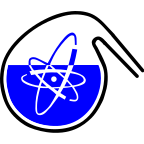Speaker
Description
Ex-core monitoring of irradiated fuel rod leakage using general-purpose assembly of fault detection is based on identification of 85Kr release from leaking irradiated fuel assemblies. The sensitivity of this method is defined by minimum volume activity of this nuclide that is authentically measured in air mixture of leak-tight circulation circuit (LTCC) via the radiation monitoring system (RMS). Beta-emitting radioactive gases concentration monitor (UDG-1B) as a component of RMS system lowers the limit of 85Kr detection in 10 times compared with gamma-spectrometric method.
However, along with obvious advantages of UDG-1B monitor there is also a considerable shortcoming – impossibility of reliable determination of 85Kr activity when other beta-emitting gaseous radionuclides exist in LTCC (it was revealed during fault detection of irradiated fuel assemblies). These "unwanted" radionuclides - 14C in the CO2 form mainly - entered the leak-tight circulation circuit. This led to necessity for constant gas sampling from the fault detection monitor for the subsequent gamma-spectrometric analysis in laboratory that followed by increased time of measurements.
In order to solve this problem, the fault detection monitor was improved - a bubbler that provide removal of gaseous beta-emitting 14C radionuclide without 85Kr loss has been added. Besides, to decrease the radioactive emissions and, as a result, population radiation loads, the filter with a Siloxide sorbent (NITI's development) for detecting long-lived 129I has been included into process scheme of LTCC.
The set of the performed measures and researches has allowed carrying out fault detection of irradiated fuel assemblies at KV-2 facility. Upgrading of KV-2 facility has allowed to identify 85Kr entrance from leaking irradiated fuel assemblies within the range of activities from 2.7•10-10 to 1.6•10-4 Ci/l. As a comparison, the lower volume activity limit of 85Kr nuclide measured by semiconductor gamma spectrometer in laboratory was 1.4•10-8 Ci/l.

